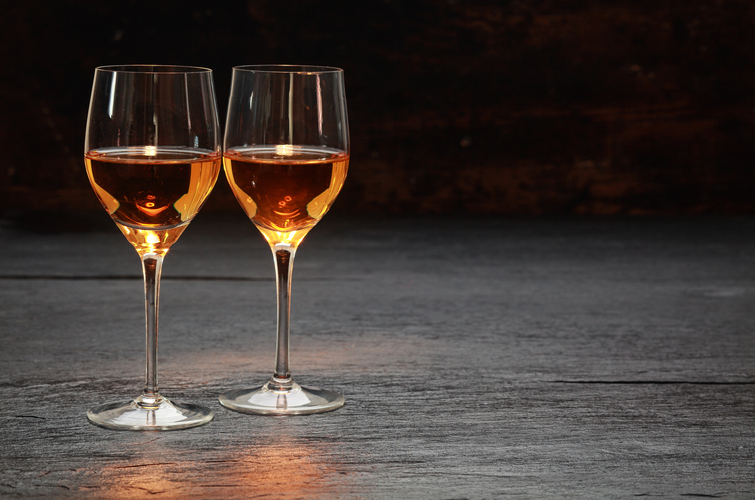If you are going to a wedding, or a wine tasting, you may wonder about the etiquette of holding a wine glass and the proper way to do so to properly taste the wine.
Holding a glass the proper way enhances your wine experience by keeping it at the ideal temperature, and ensuring the perfect conditions for the wine’s flavour and chemistry.
Although wine connoisseurs make these recommendations to fully appreciate wine, you don’t have to be a connoisseur to benefit from the improved taste.
Wine Glass Basics
Wine glasses are designed to be the perfect vessel for delivering wine at its best. Knowing the features, and how to use them, will help you make the most of your wine.
Parts of a Wine Glass
The rim is the top edge you drink from. The bowl is the cup part that holds the wine and comes in a variety of shapes to enhance the qualities of different types of wines. The base is the stand that the glass sits on and keeps it stable.
The stem connects the base to the bowl unless you are using stemless glasses.
Choosing the Best Shape for Wine
Choosing the right shape for the wine you are serving, will enhance the flavour.
Red wine glasses feature a larger, wider bowl to allow the reds to breathe better. You will need a slightly firmer hold on these glasses, as they are top-heavy. White wine glasses, on the other hand, are U-shaped or tulip shaped, to preserve a cooler temperature and concentrate the subtle floral aromas.
There are more specialized varieties to provide the optimal conditions for different wines, so there is a range of both red and white wine glass shapes.
Sparkling wine is usually served in a long stem glass with a flute, or a tall, narrow bowl to preserve the bubbles.
Dessert wines are served in much smaller wine glasses, because of their higher alcohol levels and sweetness.
Temperature
Whites and rosés are usually served chilled, while reds can be served at or just below room temperature.
When possible, white wine glasses should be chilled. You can appreciate the delicate flavours of white better when cool, so they taste more crisp. If they get too warm, they taste more alcohol and flavours are muddled. The full-bodied flavours of reds are best appreciated just below room temperature.
A key reason for holding a wine glass properly is to keep the wine at this perfect temperature.
Stemmed Wine Glass
A stemmed glass is the traditional wine glass that comes to mind when thinking of wine.
You should never cup the bowl unless the wine is overchilled, and you need to warm it a little. You also should not grip the top, around the rim, or the base.
Holding by the stem lets you maintain control while not warming your wine.
By holding the stem, you can use small wrist motions to swirl the wine, smell it and aerate it, without spilling. Cradling the bowl can warm the wine quite a bit, reducing its quality of taste. While especially important for whites, rosés, and sparkling wines, reds also benefit from not being overheated.
There are a couple of ways to hold your glass by the stem. You can hold it near the base with the stem between the thumb and the first two fingers. The remaining fingers provide a bit of stability against the base.
Others prefer to pinch the glass at the stem with the thumb and just the index finger. The index finger curls around the stem while the thumb tip supports it.
Why Hold Wine Glasses This Way?
Etiquette
Holding your wine glass elegantly like this lets you avoid making smudges and fingerprints on beautiful, crystal-clear glasses; this is seen as a way to show respect to your host, and simply makes the glasses stay beautiful looking. Regardless of the style of wine glass you are using, drink from the same spot to avoid lip marks all around the rim.
Wine Experience
This will improve your wine experience, by keeping wine at an optimal cool temperature longer.
Also, one of the best ways to enhance the flavours is to swirl the wine, oxygenating it and letting you appreciate the aroma better. This allows you to access the full range of flavour, even the more subtle nuances. When you hold a wine glass by the stem, you can swirl with better control.
You can also see the colour and visual highlights of the wine inside better.
Overchilled Wine
An exception to the rule of holding stemmed wine glasses by the stem is if the wine is overchilled, which can make it harder to taste all of the flavours. In this case, you can cradle the bowl to warm it slightly, and then revert to holding it by the stem.
Stemless Wine Glass
Drinking from a stemless wine glass means you will have to be a little more careful to avoid heating the wine and leaving smudges.
Hold these glasses near the bottom of the base, to limit smudging, and try to drink from the same side.
To avoid warming your wine, avoid holding the glass more than necessary.
Try to drink from the same side of the glass no matter what glassware you are using.
Why Hold Wine Glasses This Way?
Etiquette
Holding near the base and keeping to the same side reduces the visibility of finger and lip smudges.
Wine Experience
Holding at the base keeps your wine cooler, at the optimal temperature. Stemless glasses are good for reds or overchilled wine, however, as it is easier to warm these.
Filling Wine Glasses
When filling glasses, white wines should be poured until the glass is half full, while a red wine glass is typically filled a third of the way. Sparkling wines are usually filled three-quarters full.
While there are aesthetic and etiquette reasons for this, a key practical reason is to allow reds more air and room to breathe, while whites and sparkling wines are better without. When overfilled, it may be easier to miss the unique tastes and qualities of the wine. Also, if glasses are too full, it is harder to swirl them.
Whenever possible, serve white and rosés in a chilled glass.
Taste the Best
For world-class wines worthy of fine glasses and formal settings, visit The Hare winery. Our premium wines start with our superior grapes, lending them a distinctive flavour you can appreciate. Join us for a wine tasting in our beautiful winery with scenic vineyards.




